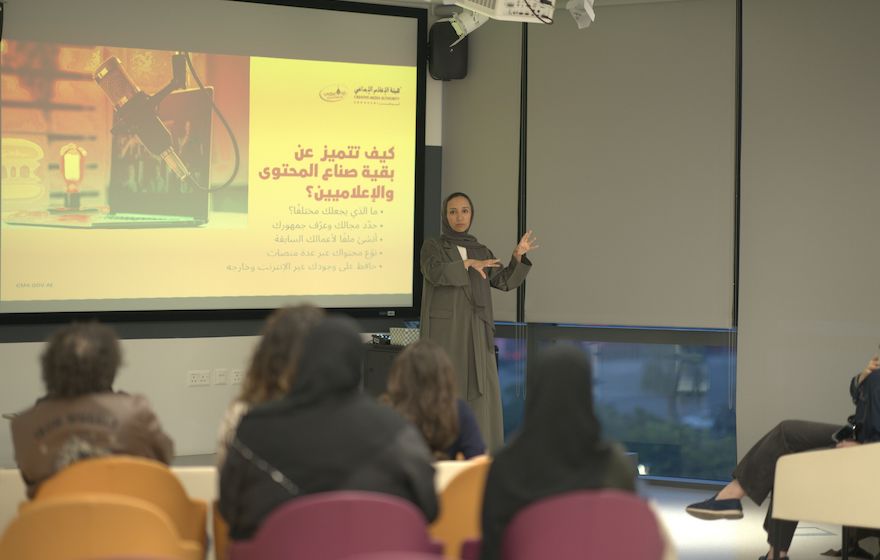It wasn’t until 2011 that Obeida Sidani and company regrouped under the framework of Les Folies, a self-described “multi-disciplinary, integrated ‘design haus’” that, today, specializes in TV branding and rebranding projects. In reality, Sidani and his team started out in the field back in 1996 – the notion of TV branding was introduced to the region sometime around 1993 – acting as an in-house creative department for Lebanese Future TV station. “Even graphic design was new to the region at that time. We did their promos, print advertising, set design and branding,” explains Sidani, who now is the cofounder and design principal at Les Folies.
From then on, the team undertook similar projects for Zain TV and ART and, having later moved to Dubai – where they launched eight channels from scratch for government-owned media conglomerate DMI (Dubai Media Incorporated) – also creating DMI’s creative department. As the TV scene grew ever more cluttered and competitive in 2003, media owners’ and channels’ demand for distinctive identities and images translated into rebranding projects – often assigned to overseas branding agencies that would “send prepackaged work” and fail miserably, owing to language and cultural barriers, explains Sidani.
It is no surprise, then, that in 2004, Sidani saw an opportunity for introducing sonic branding – also known as audio or sound branding. Sonic branding is, as its name indicates, the notion of creating an audio imprint for a brand, and was introduced globally in the late 1990s. A year later, Sidani brought, in partnership with media giant MBC PromaxBDA Arabia Awards, the regionalized edition of an international forum rewarding successful TV branding. In this regard, creative agencies also failed TV advertisers, “because they were used to branding a product and putting it on TV; branding TV and putting it on TV is not something that they could do easily,” explains Sidani, adding that in that sense, Les Folies, along with few other regional players such as Plan A in Beirut and Aroma – at one point – in Egypt, has carved itself a niche. “The time that you need to change an image for a TV channel is long. It’s not a one-off process. A logo will stick around for at least ten years. And the look has to stay for a minimum of 18 months.”
Les Folies’ core team consists of creative, design, production and marketing talents. And while the agency outsources some animation and production work, its key specialties involve logo and image change, set redesign and marketing strategy among others – and exclude media booking, buying and planning. Most recently, the agency worked on Qatar TV, Future TV and Lebanese competitor LBCI. The latter two “were interesting because they were very political. The concept of color was very political,” says Sidani, who adds that such projects don’t come around in the UAE.
One major project that has, however, come up recently for the company, was for Abu Dhabi Media Company (ADMC). In November 2014, Les Folies undertook the relaunch of three of ADMC’s channels – Abu Dhabi TV, Abu Dhabi Al Emarat and Abu Dhabi Sports – as well as the launch of a fourth niche sports channel. In a 25-day period that involved collaboration with renowned directors Frank Vroegop, Anders Schroder, Jose Gomez and Nicolas Salis, the agency shot promos for all four channels across the UAE, with plans to officially roll out the rebranding within the first quarter of 2015 – mostly by end of February and into early March. What’s more, “we changed the whole strategy of ADMC: whereas they had previously unified the look for all their channels, we decided to completely change each channel, its logo and look and feel and not have them all under one umbrella. For the flagship programs of the channels, news and morning shows, we’re doing a complete redesign of the sets.”
“At ADMC, we’re doing things we’ve never done before. We’re coming up with crazy ideas. [And] they’re not hesitating to do something new,” says Sidani when asked about working on this particular project, adding: “I find that working for a private channel is much harder than working for a governmental channel because they never resisted change. [In private channels], the challenge is in the resistance to change of the marketing and management departments. If you understand the market, you can push the boundaries as much as you can. And there are red lines you don’t cross.”





